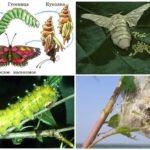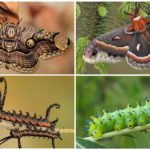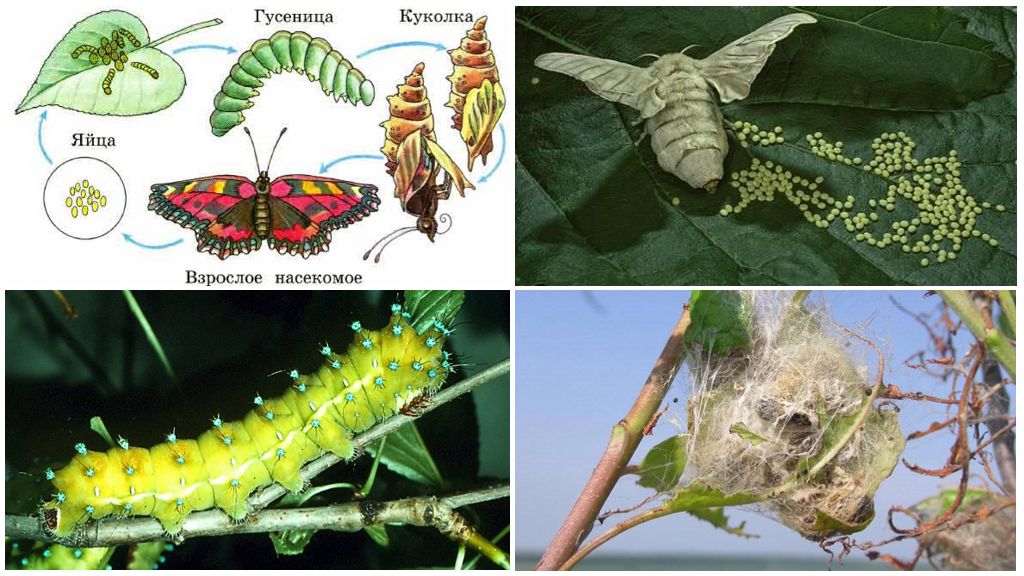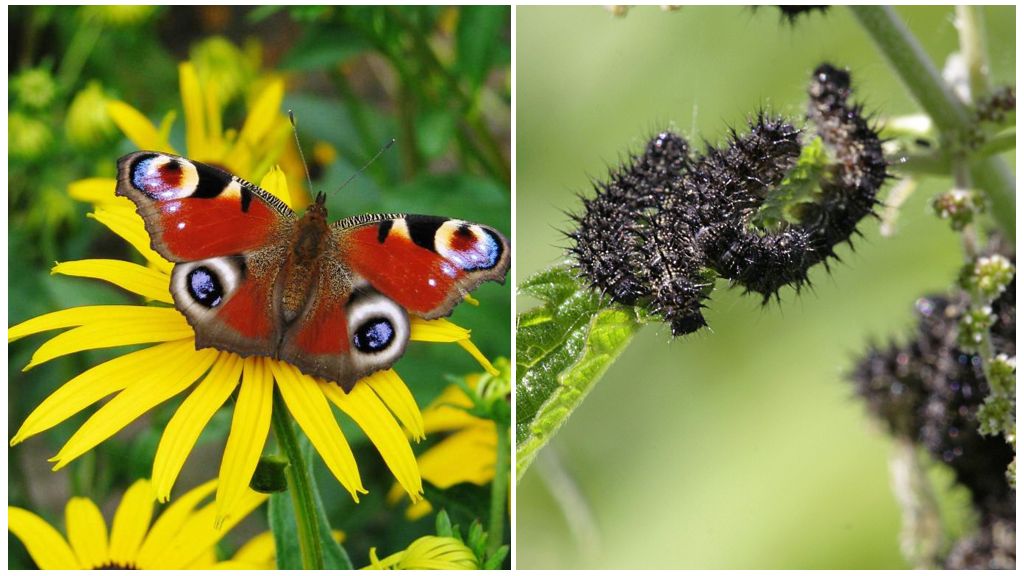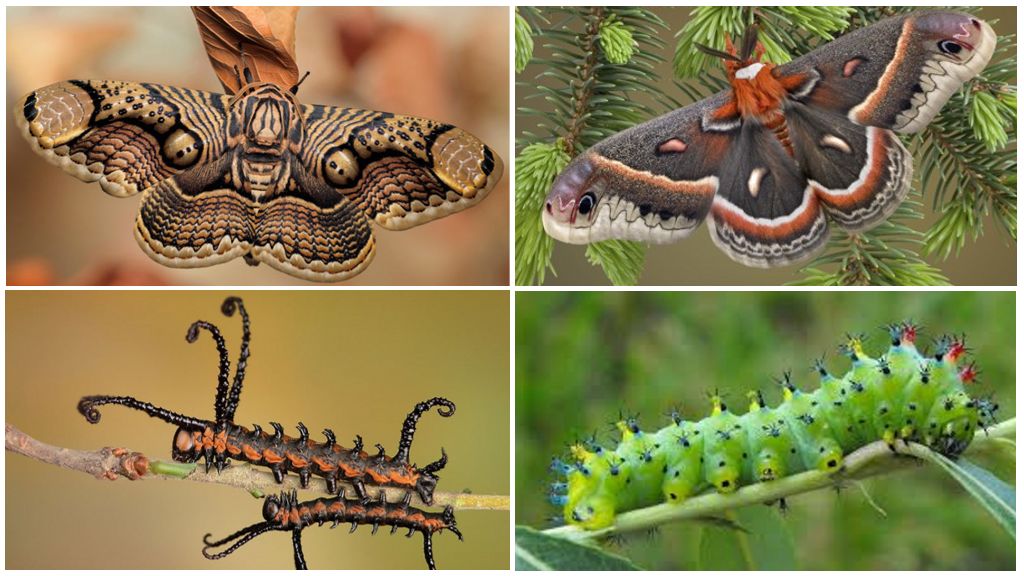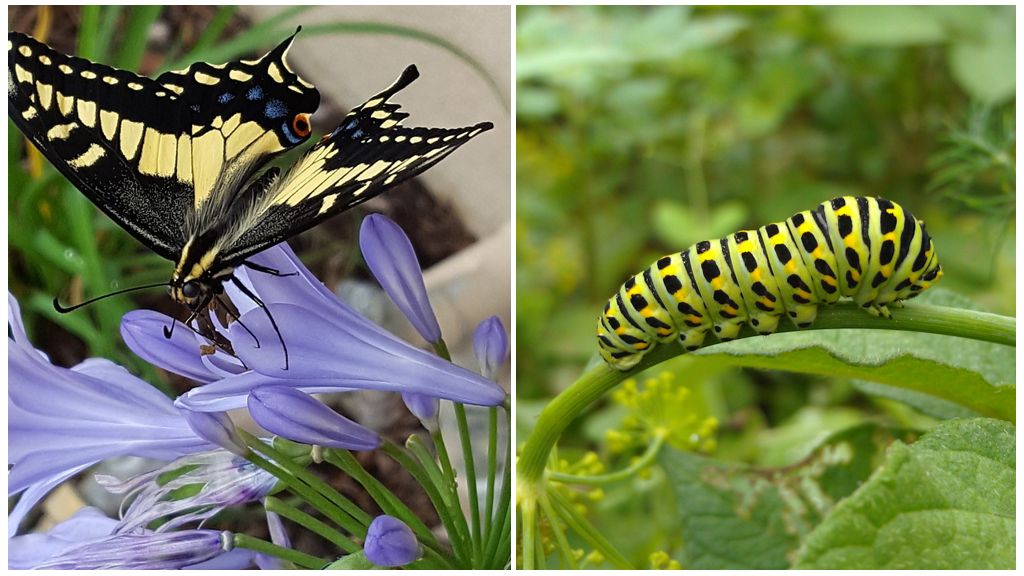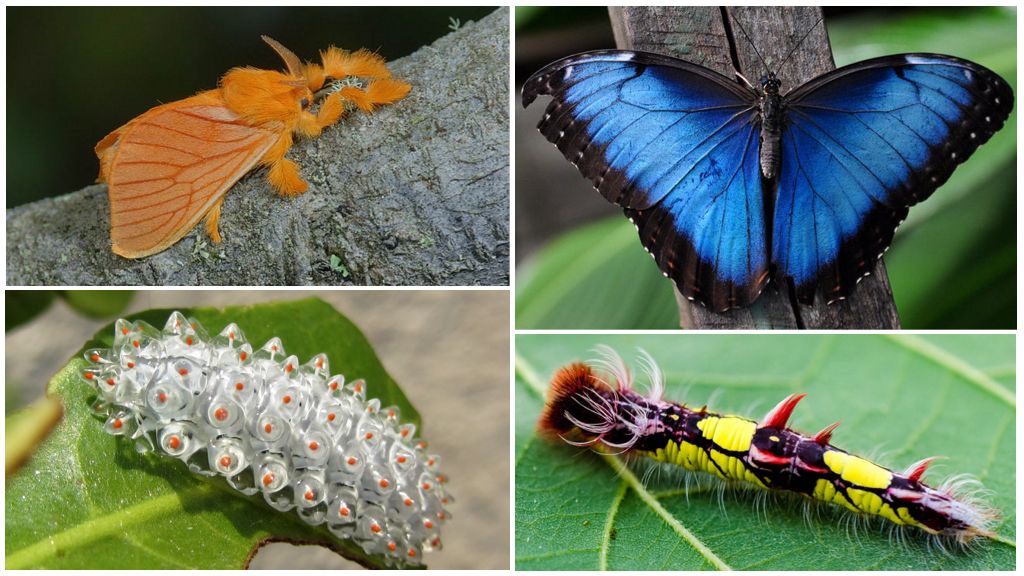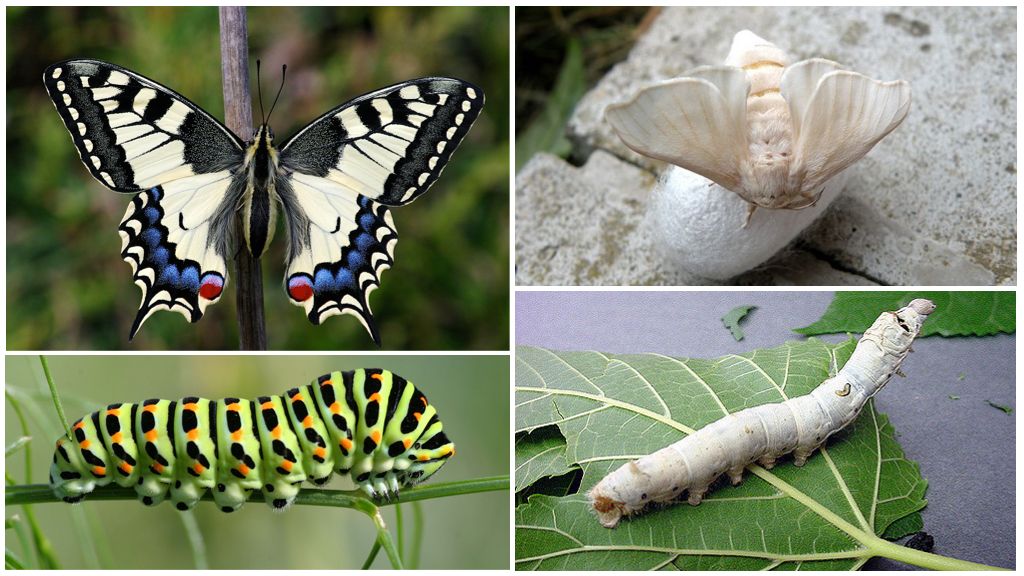Turning a caterpillar into a butterfly
Content
- Butterfly life cycle
- Butterfly peacock eye and its caterpillar
- Bromium and its caterpillar on the left, cecropia and its larva on the right
- Butterfly black dovetail
- Dalcerida and its caterpillar on the left, blue morpho and its larva on the right
- Swallowtail and its caterpillar on the left, the silkworm and its larva on the right
As the caterpillar turns into a butterfly, it is of interest to almost everyone. No less intriguing is the question whether all caterpillars turn into butterflies. In the order of lepidopteran insects, there are 156 species.The history of their appearance goes back to the era of the Jurassic period, they flit over dinosaurs, and the process of their transformation has not changed at all.
Where the caterpillars come from: the life cycle of butterflies
The female lays eggs after fertilization. Under favorable conditions, the larva develops inside. The process takes from 2 to 14 days. Upon completion, they gnaw through the rim of the egg, crawl out. So a caterpillar appears.
The size of the first stage larvae is about 1 mm. Born with a huge appetite eat a lotgrow fast. As they grow older, an average of 4 molts pass, but there are species that are reborn up to 16 times. The duration of this cycle depends on the type of insect, habitat. In our area, females have time to give life to two generations, the larva develops about 6 weeks.
Caterpillars live under the bark of trees, in grains, grain, under the leaves of various plants. They feed on juices, gain strength. At the stage of imago moth lives from several days to 20 days. During this time, either does not eat anything, or eats the nectar of plants, juices of berries, fruits.
Interesting!
In the northern latitudes, the larva does not have time for one summer to go through the full cycle of development, it remains to winter in this form, continues to develop with the onset of heat. Northern species can withstand frost below -70 degrees Celsius.In Greenland, Canada, the transformation of a caterpillar into a butterfly lasts 7-14 years.
In conclusion, the larva forms a cocoon of self-produced threads, turns into a pupa. Clings paws to a tree, leaves, freezes. The most mysterious phenomenon begins - the transformation into a moth.
Conversion process
After how much the caterpillar turns into a butterfly, being in a cocoon, depends on climatic conditions, the type of insect. From several days to 14 years. Moths in our area appear on average after 15 days.
What is the process of transformation of the caterpillar - metamorphosis. More specifically, holometamorphosis, since some parts of the larva remain. In this case - paws. Experts understand by this term the complete regeneration of forms. Just as a plastic bottle is melted down, then a glass is made.
In a cocoon with a completely immovable mind, there are complex processes inside. The body splits, turns into a liquid mass with imaginal discs. To make it clearer, this is the similarity of stem cells, and any organs, tissues can be formed from them.
Upon completion of the transformation from a caterpillar into a butterfly, an insect shapedallocates a special secret that allows you to split the walls of the cocoon. Initially the head, then the trunk, paws are shown. A few minutes a newborn insect sits without movement, waiting for the wings to dry. Then straightens them, proceeds to search for the opposite sex for mating.
Amazing creatures
Caterpillars and their butterflies not always similar, the color is absolutely not consistent with the colors of the future moth. Some larvae have similar traits - specks, divorces of identical color. To determine from which caterpillars, which butterflies come, only experts and obvious admirers of these insects can.
Caterpillars of butterflies, photos and names are presented below.
- One of the most beautiful butterflies in our area - peacock eye. The larva of this beauty is black with thorns all over her body. The change in appearance is dramatic.
- Other black caterpillars will be the urticaria butterfly.
- Amazing creation of bromine. The caterpillar looks like a wand, and the butterfly has a very interesting tree color.
- Green caterpillar with multi-colored pimples - cecropia.
- Black dovetail has simply irresistible color in green and blue tones.But on the body of the caterpillar there are also yellow dots.
- Dalceride. It looks unclear whether an insect or an animal will turn out from a larva. Appearance moth no less unusual.
- Blue morpho is another creature that enchants with its appearance.
- Machaon - a butterfly, well known in our locality.
- Butterfly, which is used to produce natural silk - silkworm. She leads a sedentary lifestyle, practically does not use wings as intended, despite the fact that their reach reaches 60 mm. The larva forms a cocoon of silk threads with a length of up to 1500 m.
Whether the caterpillars always managed to survive to the pupation stage turn into moths - yes. Reincarnation always happens. However, in nature there are other insects, the larvae of which are similar to the caterpillar, but they are called worms. At the end of the development process, they are destined to turn into beetles, bees, flies, wasps.The sawflies are very similar to the larvae of the butterflies, they are called caterpillars.
People do not cease to admire some species of butterflies; they keep in the house, creating favorable conditions for their life.

